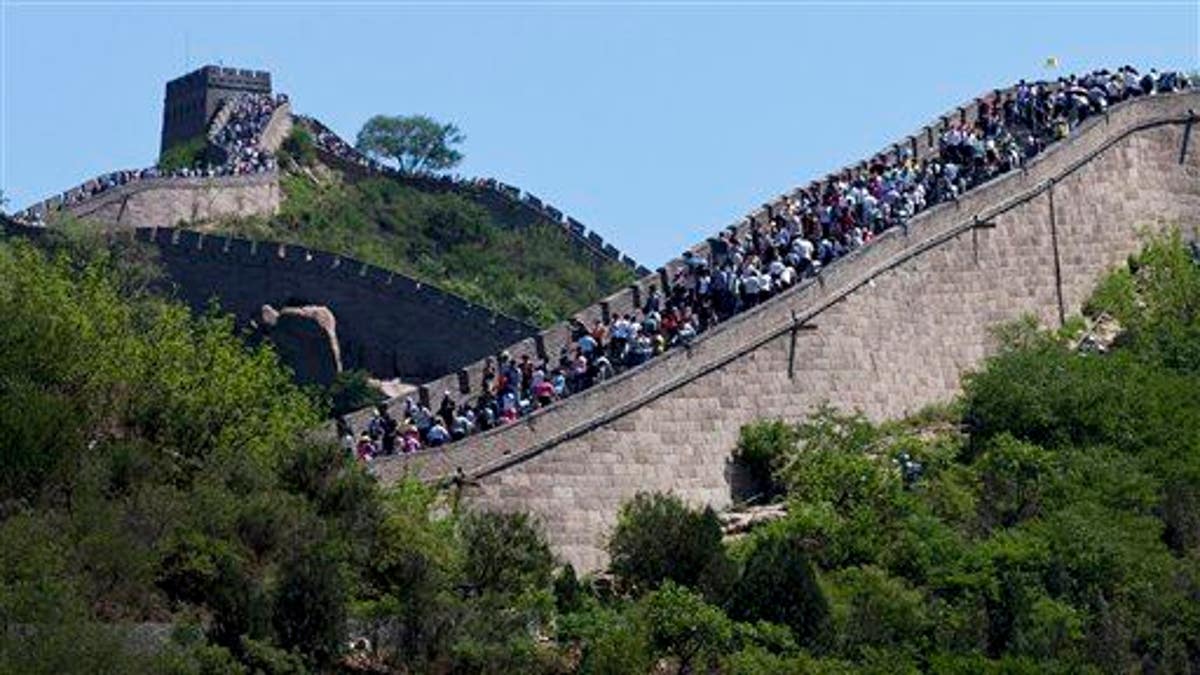
Tourists go sightseeing on the Great Wall of China during a weekend at Badaling, north of Beijing, June 2, 2012. (AP Photo/Andy Wong)
In a 2008 article headlined "The Great Wall of China Is Under Siege," Smithsonian reported that "no one knows just how much of the wall has already been lost." A Sunday report in the Beijing Times changed that.
It reported via the State Administration of Cultural Heritage that 1,219 miles of the wall have come down, with another 736 miles in a sorry state.
That former figure is about 30% of the wall's artificial length, reports the New York Times; of the roughly 5,500 miles of wall attributed to the Ming Dynasty (AD1368 to AD1644), about 1,650 miles are made from natural barriers.
And the reality may be worse: The Times notes those figures are from 2012. "Residents who live along the Great Wall used to pull down bricks" to sell for as little as $5 or use in the construction of their homes; other sections "were destroyed during urban expansion or the building of roads," an expert on the wall tells the Global Times.
A bump in tourism to parts of the wall that haven't been developed into tourist sites has inflicted further harm. Some of the wall's other predators are of a more natural variety: lightning, earthquakes, and floods have caused damage, and the Asia Times reports that trees have pushed their way through its cracks.
In 2006, China enacted regulations that would punish those who take the Great Wall's bricks with a fine of as much as $805, "but there is no specific organization to enforce the rules," and the situation is complicated when the damage occurs on the border of two provinces, per the Global Times.
It runs through impoverished areas, too, and the New York Times adds that the regulations are "a mere scrap of paper" there. (It turns out China's Great Wall wasn't its first great wall.)
This article originally appeared on Newser: Great Wall of China Is Disappearing
More From Newser
